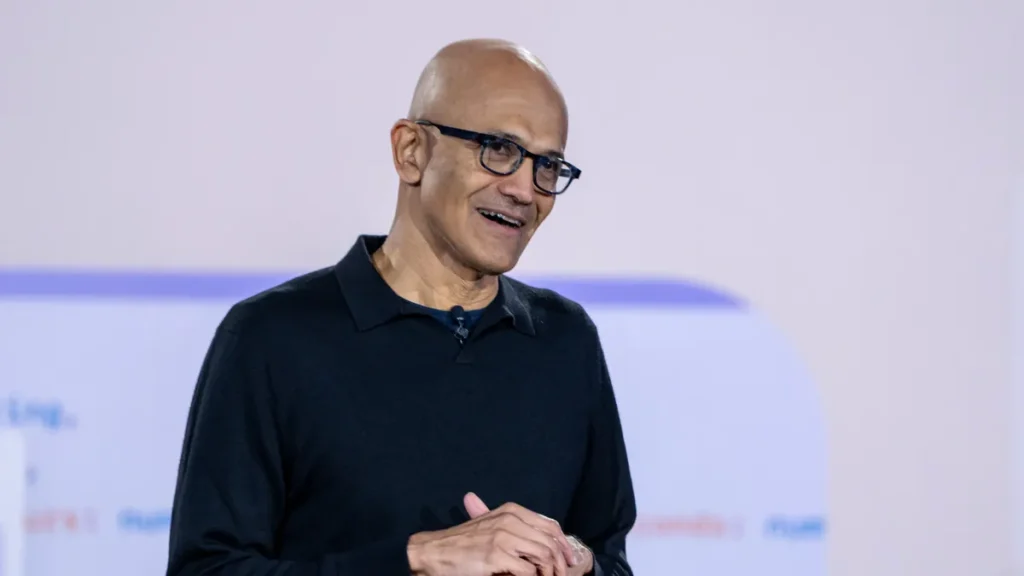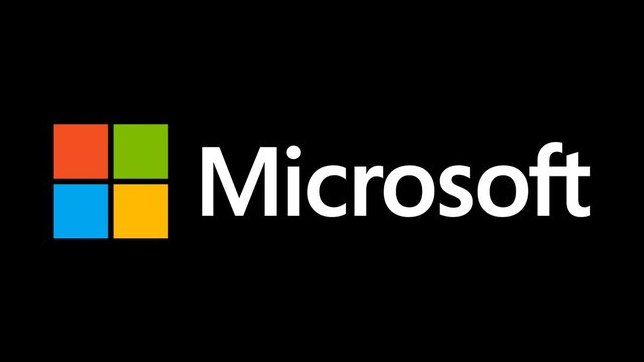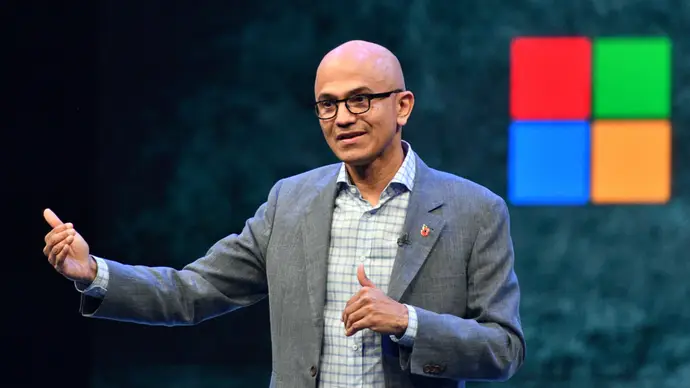
Table of Contents
Microsoft’s Despite soaring profits and record stock performance, Microsoft CEO Satya Nadella addressed the difficult reality of significant job cuts in a recent memo to employees. So far in 2025, the tech giant has laid off over 15,000 employees, plus an additional 2,000 staff deemed underperformers. This downsizing occurs against a backdrop of remarkable financial success: Microsoft reported approximately $75 billion in net income over the past three fiscal quarters, invested $80 billion in AI infrastructure, and saw its shares close above $500 for the first time on July 9th.
Nadella acknowledged the weight of the layoffs, directly stating they were “weighing heavily” on him and many employees. He framed the situation as “the enigma of success in an industry that has no franchise value.” While conceding Microsoft is thriving “by every objective measure” – citing market performance, strategic positioning, growth, massive capital expenditure, and unprecedented rewards for some talent – he justified the cuts as part of the industry’s inherent dynamism. “Progress isn’t linear,” Nadella wrote. “It’s dynamic, sometimes dissonant, and always demanding.” He positioned this challenging period as a new opportunity for Microsoft to shape the future, lead, and achieve greater impact, emphasizing the critical need for continuous “unlearning” and “learning” to adapt to new technologies and challenges.
Microsoft’s Employee Impact and Broader Wellness Concerns

Despite Nadella’s forward-looking and optimistic tone, reports indicate widespread disappointment and sadness among affected employees, many of whom cherished their roles. This human cost coincides with broader concerns about employee well-being highlighted in a separate report focusing on India. The report reveals that presenteeism and chronic illnesses cost Indian companies up to ₹1.12 lakh per employee annually. Compounding the issue, over 70% of employees reportedly have at least one lifestyle-related risk factor, yet only 20% of employers provide routine health screenings.
Satish Kannan, Co-founder & CEO of MediBuddy, stressed the strategic imperative of employee wellness for India’s future: “India’s journey towards becoming a Viksit Bharat by 2047 cannot rest on economic metrics alone; it must be built on the health, productivity, and well-being of its people… employee wellness can no longer be treated as an optional benefit.” He advocated for a shift from sporadic health initiatives to “always-on, digital-first ecosystems” to address rising health risks and evolving workforce expectations, positioning well-being as fundamental to sustainable national and corporate success.
Microsoft’s CEO Satya Nadella’s layoff memo explanation and context
Microsoft CEO Satya Nadella directly addressed the significant employee layoffs in a recent memo, acknowledging the profound personal impact: “Before anything else, I want to speak to what’s been weighing heavily on me and what I know many of you are thinking about: the recent job eliminations.” He sought to explain the paradox of cutting over 15,000 jobs (plus 2,000 underperformers) while the company reports soaring profits, record stock prices above $500, massive $80 billion AI investments, and unprecedented rewards for top talent. Nadella stated, “By every objective measure, Microsoft is thriving—our market performance, strategic positioning, and growth all point up and to the right,” and noted increased capital expenditure and a relatively stable overall headcount. Yet, layoffs occurred. He framed this contradiction as “the enigma of success in an industry that has no franchise value,” emphasizing that “Progress isn’t linear. It’s dynamic, sometimes dissonant, and always demanding.” Nadella positioned these difficult changes as an opportunity for Microsoft to reshape, lead, and achieve greater impact. He stressed that future success hinges on the company’s ability to continuously adapt through the challenging processes of “unlearning” and “learning,” while reaffirming commitment to Microsoft’s core mission, priorities, and culture – the ‘why, what, and how’. However, despite this strategic rationale, reports indicate widespread disappointment among affected employees, with many expressing deep sadness and emphasizing how much they valued working at the tech giant. This downsizing occurs as Microsoft solidifies its position as the world’s second most valuable public company (after Nvidia), leveraging the enduring dominance of Windows and Office alongside the rapid growth of its Azure cloud services.
summary of Microsoft’s capital spending,
Microsoft’s aggressive layoffs of over 15,000 employees in 2025, including 9,000 in early July alone, stand in stark contrast to its record $80 billion capital expenditure focused on AI infrastructure. Company leadership attributes the job cuts to shifting business priorities and operational efficiency needs, explicitly denying that AI productivity gains are currently driving eliminations. Simultaneously, Microsoft is launching a $4 billion “Elevate” initiative to skill workers globally for the AI era, positioning itself as an economic development leader. Executives frame these parallel actions as necessary adaptation to technological change. However, President Brad Smith acknowledged that massive AI-driven investments—including expanding data centers and acquiring scarce chips—have intensified pressure to reduce operating costs, with headcount being a primary target in the tech sector. This cost-cutting coincides with Microsoft fiercely competing for AI talent, hiring over 24 specialists from Google DeepMind in just six months amid an industry-wide recruitment war.
Internally, the layoffs have triggered significant cultural concerns. Many employees report being blindsided by abrupt terminations, fostering an atmosphere of fear and heightened performance pressure. Critics argue the process has eroded the more compassionate environment cultivated under CEO Satya Nadella over the past decade. Former senior engineer James McCaffrey articulated this sentiment in a widely-shared blog post, stating Microsoft has “transformed from a good company into a shameful company with little-to-no internal integrity,” expressing hope it can “rebound and become an admirable company again.” Longtime staff fear a regression to the “old Microsoft” characterized by internal rivalries, poor communication, and job insecurity, marking a potential retreat from Nadella’s era of inclusive leadership despite the company’s strategic investments and market strength.
Satya Nadella’s memo outlining Microsoft’s three business priorities:
In his Thursday memo, CEO Satya Nadella framed Microsoft’s aggressive shifts—including major investments and layoffs—within a long-term evolution from a “software factory” to an “intelligence engine” empowering users to build AI tools. He explicitly defined three core business priorities moving forward: security, quality, and AI transformation. Nadella declared the first two—security and quality—as absolutely “non-negotiable,” emphasizing that Microsoft’s infrastructure now serves as “mission critical for the world.” This elevated responsibility necessitates unwavering commitment to these foundational elements even amidst transformation. The third priority, driving AI transformation, represents the company’s future direction.
Nadella acknowledged the inherent tension in executing this strategy, describing it as a paradox requiring Microsoft to undergo a difficult process of continuous “unlearning” and “learning.” He stressed the challenge of simultaneously maintaining highly successful existing businesses while innovating to create entirely new categories and business models, calling this dual mandate “inherently hard” and achievable by “few companies.” Despite this complexity, he expressed “full confidence” in Microsoft’s ability to navigate the transition, stating the company would find the “resolve, courage, and clarity” needed to fulfill its mission in this new paradigm.
To contextualize the significance of the current moment, Nadella drew a parallel to the pivotal PC revolution of the early 1990s. He urged employees to embrace the challenge as a defining period, expressing his hope that in retrospect, they would view this era as the time they “learned the most,” made their “biggest impact,” and were “part of something transformational.” Nadella concluded by noting that further details on strategy and execution would be provided during the upcoming earnings report and addressed in a subsequent employee town hall meeting.
